How to Customize OxygenOS
Part 1 of 3:
Customizing the Home Screen
- Change the wallpaper. Rather than use the default wallpaper, why not change it to one you really like? Press and hold down the home screen, touch the Wallpapers icon, and then select a new wallpaper from the options presented. These will include some stock wallpapers, your photos, featured photos, and any wallpaper apps you have installed.
- Change your icon pack. The OxygenOS launcher allows you to switch to a different icon pack. Long press the home screen, select Home Settings, and open the Icon Pack menu from which you can choose from one of three preinstalled icon packs, or get and install new ones from the Google Play Store.
- Add widgets. Widgets are an essential aspect of the Android experience, and adding widgets to your home screen can increase its functionality in addition to making it look prettier. Long press the home screen and click on Widgets to customize your home screen with widgets.
- Customize the Shelf. The OxygenOS launcher comes with a 'Shelf', a customizable display that can be accessed by swiping right on the home screen. Access the Shelf and click the icon on the top right corner to customize it.
- If you wish to remove the shelf altogether, disable by long pressing the home screen, going to Home Settings, and flipping the shelf switch .

- If you wish to remove the shelf altogether, disable by long pressing the home screen, going to Home Settings, and flipping the shelf switch
Part 2 of 3:
Customizing the Interface
- Choose the theme you like. OxygenOS features a system-wide theming mechanic, which you can access throughSettings > Display >Customization > Theme. You can choose from a colorful, light, or dark theme. Additionally, if you own a special edition device, some device-specific options may be available.

- Tweak the accent color. If you're not using a special edition theme, you can change the theme's accent color. Open theSettings app, navigate to Display Customization, and change the accent color to one you like. You can choose from the presets, or any custom color by touching the grey palette icon in the bottom right corner.

- Customize the ambient display. Enable or disable the ambient display inSettings > Display > Ambient display. If enabled, you can choose what information is displayed on the ambient display in the same menu.

- Adjust navigation options. Instead of sticking with standard virtual button navigation, try out OxygenOS's gesture controls. Go to the Buttons and gestures menu in settings, click on the Navigation bar and gestures option, and select the navigation option that you like best. You can choose to stick with a fixed navigation bar, use a 'hybrid mode' that features both gestures and buttons, or go the whole hog and exclusively use gestures, removing the navigation bar altogether for more screen real estate.
- Add quick gestures. Want to quickly open the camera or turn on the flashlight? This can be accomplished through quick gestures.Under buttons and gestures, click on Quick gestures. You can bind various functions to various gestures.
- Switch to a different font. Found under the Display menu in settings, you can choose to replace the default font with OnePlus Slate, a special font created by the makers of OxygenOS. You can also adjust the font size, the option for which is found under the same menu.
- Customize the battery indicator. Open theSettings app and navigate to Display > System > Status bar > Battery style. Here, you can choose between a bar and a circle, or hide the indicator altogether. In addition, you can choose to show or hide the battery percentage indicator.

- Show or hide status bar icons. Tired of seeing icons you don't need? You can use the icon manager found in the status bar menu to choose which icons show up on the status bar.
- Edit unlock options. You can choose to enable face unlock and fingerprint unlock, in order to make signing into your phone easier. You can add faces and fingerprints underSettings > Security and lock screen > Device security.

- Change the fingerprint animation effect. OnePlus implemented in-display fingerprint scanners starting with the OnePlus 6T. If you own one of these phones, you can change the animation that plays as the scanner scans your fingerprint. Open the fingerprint unlock menu and click on Fingerprint animation effect. Here you can choose from several animations.
Part 3 of 3:
Customizing Advanced Options
- Customize animation speed. Changing the animation speed to be slower or faster can make your phone's interface seem smoother or faster respectively. To change the animation speed, open theSettings app and navigate to the About phone section. Repeatedly press the Build number section to enable developer options.

- Navigate to Settings > System > Developer options and adjust the animation scales found under the drawing section. Find the sweet spot between smoothness and speed that you like best. A higher number means a slower animation, and vice versa. You can also disable animations entirely for the fastest experience.
- Hide the notch. If you're using a device with a notch (OnePlus 6, OnePlus 6T, OnePlus 7), you can choose to hide the notch in the settings app, the option for which is found under Display > Notch display.
- Use GravityBox to further customize OxygenOS. This is an advanced tool that needs the Xposed Framework to function. Use the Xposed Framework with GravityBox for complete control over your device.
4 ★ | 1 Vote
You should read it
- How to activate the Home section in the Settings application Windows 11
- Top 5 quality home printers, the most popular printers
- How to choose a dehumidifier for families in the monsoon season
- How to display the Home button on Coc Coc
- How to remove the Home page from the Settings app in Windows 11
- Choose the display location of images in Word
- 20 small tricks with Edge browser you should know (Part 2)
- Advice on choosing suitable generators for families
May be interested
- How to customize the Ubuntu dock to look like macOS
 one of the key features of the gnome 42 desktop environment is a highly customizable dock or dash. let's see how you can customize the new dock in ubuntu 22.04 lts (jammy jellyfish) and above to have the same look and feel as on macos.
one of the key features of the gnome 42 desktop environment is a highly customizable dock or dash. let's see how you can customize the new dock in ubuntu 22.04 lts (jammy jellyfish) and above to have the same look and feel as on macos. - How to customize the Taskbar in Windows 10
 how to customize the taskbar in windows 10. on windows 7 we can customize a lot of things on the taskbar but on windows 10 we can customize more. invite you to track some tips to customize the taskbar below
how to customize the taskbar in windows 10. on windows 7 we can customize a lot of things on the taskbar but on windows 10 we can customize more. invite you to track some tips to customize the taskbar below - How to customize the Taskbar with TaskbarX
 if you want a central app center similar to macos, you need a third-party taskbar customization tool, like taskbarx.
if you want a central app center similar to macos, you need a third-party taskbar customization tool, like taskbarx. - How to customize the Command Prompt on Windows
 command prompt is a powerful tool that many people like to use. however, it looks a bit boring and unfriendly. fortunately, you can customize the command prompt according to your needs and preferences.
command prompt is a powerful tool that many people like to use. however, it looks a bit boring and unfriendly. fortunately, you can customize the command prompt according to your needs and preferences. - How to customize iPhone lock screen
 ios 16 brings a lot of experiences to users, including customizing the ios 16 lock screen with more options.
ios 16 brings a lot of experiences to users, including customizing the ios 16 lock screen with more options. - How to customize the control for 2 touches left and right on AirPods
 you can customize the airpod to play a previous or next track. you also do not have to assign the same control function to both airpods. here's how to customize the 2-touch control feature on the left and right earphones on airpods.
you can customize the airpod to play a previous or next track. you also do not have to assign the same control function to both airpods. here's how to customize the 2-touch control feature on the left and right earphones on airpods. - How to Customize Your Mac Using the Terminal
 this wikihow teaches you how to customize your mac computer using terminal commands. terminal is a command prompt program that comes on every mac computer and allows users to input detailed commands to customize the way the operating...
this wikihow teaches you how to customize your mac computer using terminal commands. terminal is a command prompt program that comes on every mac computer and allows users to input detailed commands to customize the way the operating... - 6 tips to customize the Start Menu on Windows 11
 windows 11 is an operating system completely redesigned by microsoft, with an interface of soft curved corners combined with a new start menu, bringing a more modern and beautiful look to your laptop.
windows 11 is an operating system completely redesigned by microsoft, with an interface of soft curved corners combined with a new start menu, bringing a more modern and beautiful look to your laptop. - Some tips to customize Taskbar on Windows 10 effectively
 the taskbar bar is one of the most used features in windows 10 as well as other windows versions. to better understand the taskbar and how to customize the taskbar in windows 10, please refer to the following article of network administrator.
the taskbar bar is one of the most used features in windows 10 as well as other windows versions. to better understand the taskbar and how to customize the taskbar in windows 10, please refer to the following article of network administrator. - 4 advanced Android customizations don't need root
 you can make some customizations on android without rooting the device. join us to find out what those customizations are!
you can make some customizations on android without rooting the device. join us to find out what those customizations are!


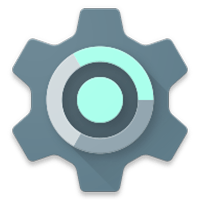
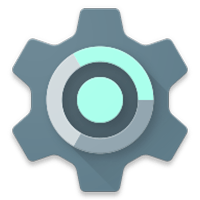
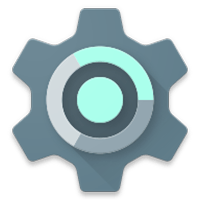
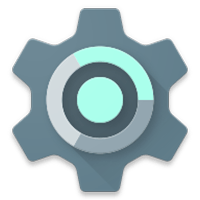
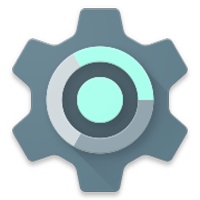










 How to Share with 4shared
How to Share with 4shared How to Transfer Files Between Two iOS Devices with AirDisk Pro
How to Transfer Files Between Two iOS Devices with AirDisk Pro How to End a Software Licensing Agreement
How to End a Software Licensing Agreement How to Use BOINC
How to Use BOINC How to Set Up iTunes
How to Set Up iTunes How to Run a Windows Longhorn Virtual Machine in VMware
How to Run a Windows Longhorn Virtual Machine in VMware